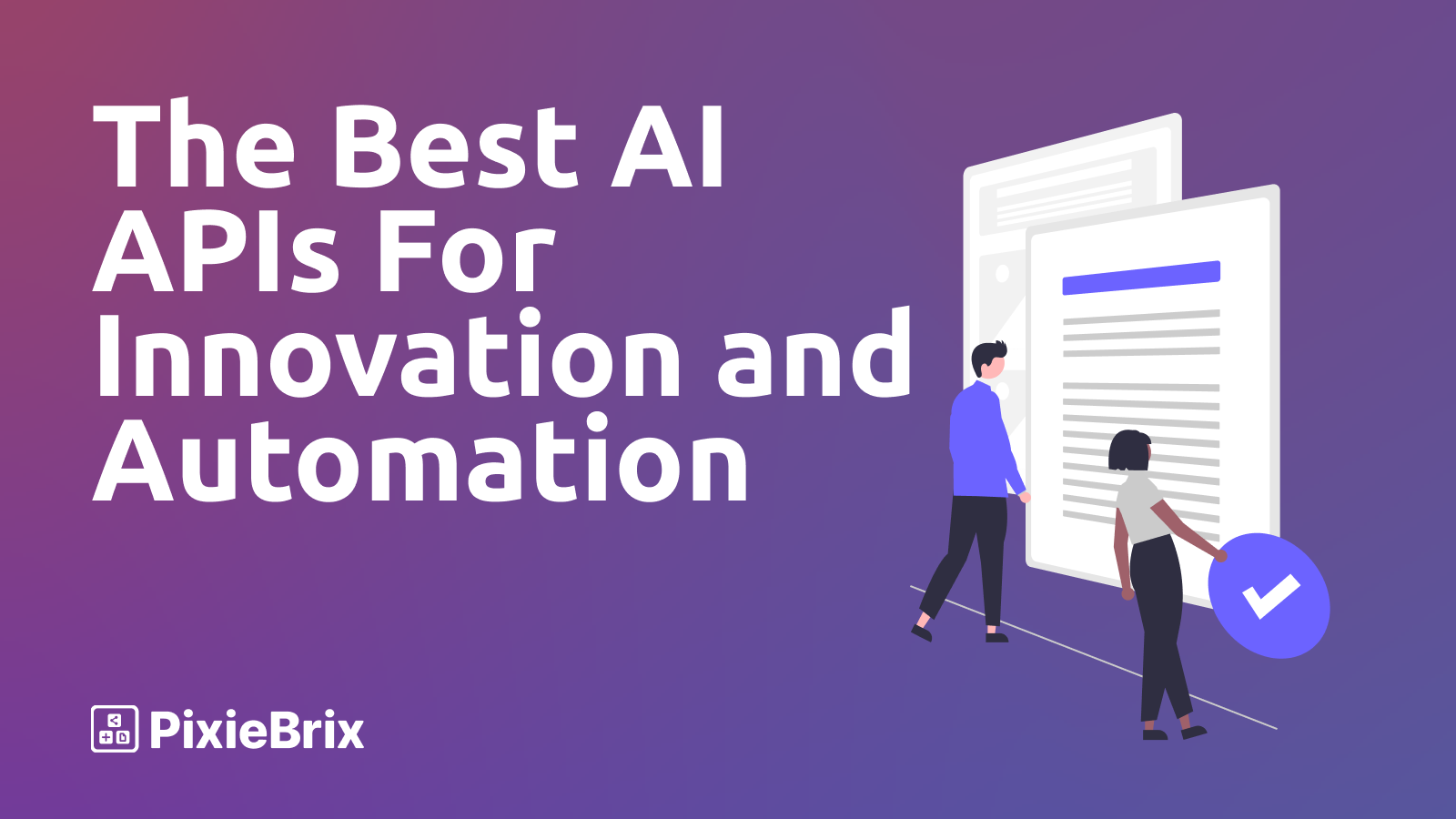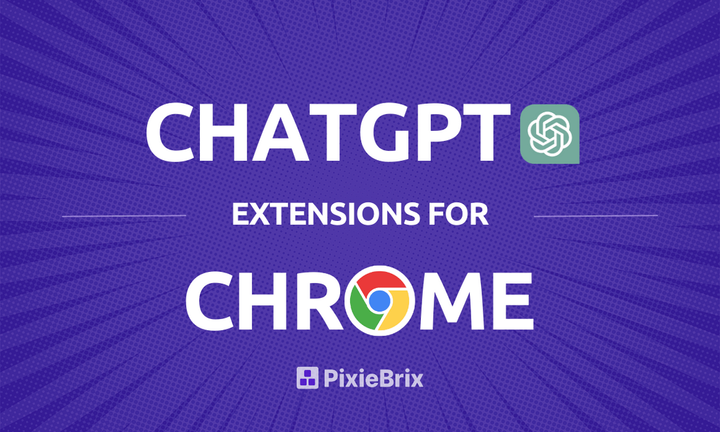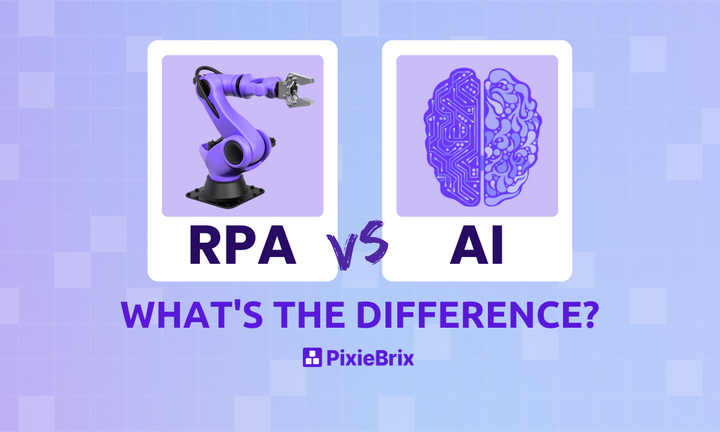The 6 Top AI APIs for Those Who Want To Automate While They Innovate
AI APIs are transformative tools that enable seamless integration of artificial intelligence functionalities into applications, revolutionizing industries and enhancing human capabilities.

Everyone’s still talking about AI, but the conversation has shifted from “Look at these fun things ChatGPT can do” to “How can we build our next big thing with AI?” That’s why most of the biggest tech companies out there have released some kind of AI API by now — though many of them have been in the works for years.
So if you’re looking for a way to get your AI project started on the right foot, here are the top APIs to check out.
Google AI APIs
With Google offering just about every service a developer might need, it’s no surprise that they have their own AI services. Not all of them are strictly APIs, meaning you’ll pretty much have to use them out-of-the-box and hope they fit your situation — this includes a platform for deploying your own AI models and pre-configured deep learning containers for prototyping AI applications. You can see every AI tool offered by Google here.
But if it’s strictly an API you’re looking for, then you have a couple of options from Google that’ll let you add the following AI-powered features to your project:
- Text-to-Speech
- Speech-to-text
- Cloud Natural Language
- Time Series Forecasting
- Detecting objects and text from images
OpenAI
This is the big one. OpenAI’s API lets you use its built-in models — like the one powering ChatGPT — to build your own AI projects. Here are the big three models you can use with this API:
- GPT: This is the language model powering Chat-GPT, so you’ve probably experimented with it already. Whatever you need a language model for, GPT is going to be one of your strongest options.
- Dall-E: This model is to image generation what GPT is for text generation. All a user needs to do is put in a text prompt to get a custom image out the other end. That means it can power all sorts of projects.
- Whisper: This is OpenAI’s speech-detection model, and it can transcribe spoken speech, identify specific patterns, or even translate what you give it.
OpenAI’s API is definitely one of the biggest players in the space right now, and you should probably give it a try if you’re building something powered by AI. But if you want a complete solution without using OpenAI, you do have some alternatives.
IBM Watson
As one of the titans of computing — and similar systems that came before — it should be no surprise that IBM has its own offering in the AI API arena. IBM’s Watson does a lot of what you’d expect from an AI API at this point, but there’s one important factor that can differentiate it from some others: being enterprise-ready.
IBM is probably the name that comes to mind when dealing with enterprise-level technology, which makes them a contender on the level of other giants like Microsoft when it comes to AI. Here’s what you can get from Watson:
- An automated assistant you can deploy for customer service channels, IT help desk, and more.
- Combine AI with robotic process automation to handle repetitive tasks.
- A coding copilot so you can get some pair programming done when you don’t have access to another developer.
- A natural language AI model that gives your teams the information they need in a way they can easily understand.
PixieBrix: More than an API
An AI API is great for building a custom software project, but it can be a bit too much for some needs. Sometimes all you need is to plug an existing AI model into a website you use every day to automate a repetitive task. So what should you do if you don’t want to code anything?
Use PixieBrix.
PixieBrix is a low-code platform anyone can use to build automations, custom sidebars, and other enhancements for Chrome that supercharge your online experience, automate your work, and make your online life easier. And now lots of these enhancements can use AI models like ChatGPT to put AI at your fingertips.
Here are just a few ways you can combine PixieBrix and AI:
- Running ChatGPT prompts from a Google Sheet on any website.
- Use ChatGPT to check your spelling and grammar.
- Have ChatGPT pretend to be a CEO as it answers your questions.
- Automatically generate tweets based on your profile and writing style.
The best part? You can try PixieBrix for free.
Azure Cognitive Services
If you want to build your own AI-powered service, Microsoft has a developer-focused solution for you. Azure Cognitive Services bring some powerful AI features to bear, which are admittedly pretty similar to what you’ll find from other providers. Here’s everything that Microsoft’s Azure Cognitive Services API can support:
- Speech: This includes speech-to-text, text-to-speech, and even speaker recognition.
- Language: Use AI to recognize specific terms, build chatbots, and even translate text from over 100 languages.
- Vision: Analyze images with AI and customize the model to fit whatever needs your users have.
- Decision: This model can handle everything from detecting offensive content to identifying anomalies in recognizable patterns.
- OpenAI Service: That’s right, you can even access OpenAI’s API through Azure! If you’re already working in Azure environments, this can be an easy way to add AI to your workspace.
Amazon Web Services AI
Amazon Web Services (or AWS) is an umbrella term that covers many services offered by Amazon and used broadly by a ton of tech companies. AWS cloud computing services are used by companies like Airbnb, Twitter, The Guardian, and Nordstrom. So it’s no surprise that Amazon offers AI APIs as well.
That plural is intentional, since Amazon offers a breadth of AI services. Need to quickly analyze a batch of images with AI? Then you might use Amazon Rekognition. Have to pull text from millions of documents? That’s where Amazon Textract comes in.
No matter what you need, you can probably find an Amazon API that’ll help you get it done.
Build easily with AI
With the right API, you don’t have to sink a ton of resources into your next AI project. Whether you’re building complex AI solutions for your organization or just need to inject some AI power into an existing workflow, these APIs are great ways to streamline your work. But if you want a way to get similar results with even less work, you should sign up for PixieBrix.



